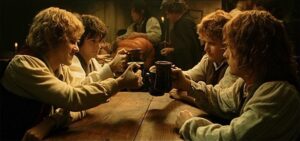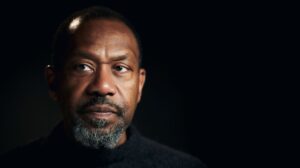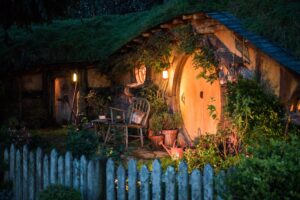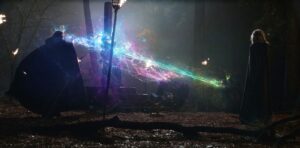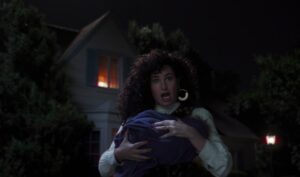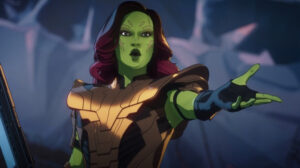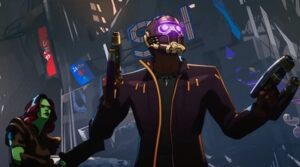Hot take, but when the first trailer for Matt Reeves’ The Batman released at last year’s DC Fandome event, the truth is that I wasn’t immediately blown away by it like many were. That first trailer was very brief to be fair, on account of The Batman only being about 25% complete at the time, but the initial impression it gave me was that Reeves’ interpretation of the timeless character of Batman and the iconic locale of Gotham City would be very gritty and grounded in realism – which is fine if you like that sort of take on superheroes, but I’m somebody who generally enjoys more fantastical elements in comic-book stories.
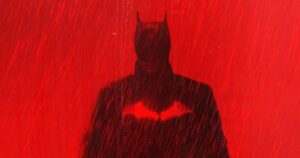
That’s the reason why, as a rule, I’ll almost always gravitate towards the…shall we say, zanier corners of any cinematic universe – whether that be WandaVision in the MCU or Shazam! in the DCEU – but it’s a rule with enough exceptions (for instance, I thought the recent Black Widow movie would have benefited from being significantly more grounded) that I really have to explain why I feel this way specifically with regards to The Batman, before we discuss the new trailer released yesterday.
It’s partly because I feel as though gritty edgelord Batman has been done and overdone; not always well, but it’s hardly a novel concept in comics or on camera, either. The one truly new aspect that Matt Reeves is apparently bringing to his portrayal of Batman is an emphasis on the character’s role as a detective…which is something that the trailers haven’t shown a great deal of, probably for fear of clever fans piecing together clues and figuring out the film’s twists and turns months before it releases in March of next year.
But more importantly to me, it’s also because Batman and his rogues gallery are always more interesting to me when they’re allowed free rein to be eccentric, campy, and/or straight-up weird. The Riddler, the Penguin, and Catwoman, all of whom will have major roles in The Batman, all have an element of capricious whimsy baked into their characters that Matt Reeves seemed to be removing from all three – especially the Riddler, who is now a genuinely terrifying mastermind styled after the Zodiac Killer, but with little of the Riddler’s typical flair and colorful charisma. For me personally, that’s why The Batman‘s first trailer, while very well-edited, extremely atmospheric, and exceptionally beautiful, didn’t really affect me the way it did others.
But one year later, here we are at the end of the second annual DC Fandome event; and thanks to endless release date shuffling and excruciating delays, we’ve finally gotten to see only our second trailer for The Batman. It’s a full-length trailer this time, more seamlessly stitched-together than the first and with a lot more action and CGI to show off. And much to my surprise, I think this trailer may have changed my mind on Matt Reeves’ vision.

I knew I was going to like it more than the first teaser when the trailer opened with a scene of Paul Dano’s Riddler being apprehended and arrested by Gotham City police in a coffeeshop, while the camera lingers on the character’s iconic question-mark emblem written in the foam of his coffee. It’s a simple yet striking stylistic choice that feels very much in line with the Riddler’s established history and characterization while still serving this new persona that Reeves is crafting for the villain, and seemed so deliberately quirky (at least to my eye) that it immediately piqued my interest. I mean, it’s much too clean a question-mark. Realistically, it shouldn’t have held that perfect curlicue shape for that long. But that’s what I love about it.
And there are plenty more scenes like that sprinkled throughout this trailer. The character of Selena Kyle, as played by the fabulous Zoë Kravitz, looks to have sauntered straight off the comic-book page through a revolving door of stylish wigs and glamorous fits – emerging with a Catwoman suit that, while in need of a couple tweaks and refinements, will make for a good starting-point for her character. Her on-and-off clandestine romance with Batman is complemented by stunning shots of the Gotham City skyline at its most romantic, offering a welcome counterbalance to the chaos erupting in the streets far below.
But lest the villains should sneak in and steal the spotlight, the most over-the-top moment of all in this trailer is wholly Batman’s to own – because as many have pointed out and as Reeves seems to understand, Batman is a lot like his villains in that he excels at putting on a show. That’s why he dresses like a bat, lurks in a cave, emblazons his logo on the night sky, and why driving the Batmobile straight through a wall of fire to chase the Penguin, while his cape flaps in the wind behind him like bat-wings, is completely in-character for him. And that’s why the Batman should never be grounded too heavily in realism, in my opinion at least. You lose more than you gain.
I would say the same of the Penguin too, but this is unfortunately an instance where I feel Matt Reeves has possibly missed the mark. Without his signature monocle, parasol, top hat, and flock of highly-trained penguins, this version of Oswald Cobblepot is Penguin in name only – and for the life of me, I still can’t figure out the reason behind casting Colin Farrell in the role only to bury him under a mountain of facial prosthetics and makeup, and then have him affect a boisterous Italian accent.

Stuff like that still gives me pause, and makes me concerned for how Matt Reeves will adapt other characters from Batman’s rogues gallery in the future, but I’m willing to give The Batman a chance. Visually, there’s no question that the film looks breathtaking – thanks in large part to cinematographer Greig Fraser, who also worked on Dune and Rogue One. It’s got action, it’s got mystery, it’s got an all-star cast. The only real question, for me at least, is whether it has the panache that I expect and demand from my Batman content.
Trailer Rating: 8.5/10
